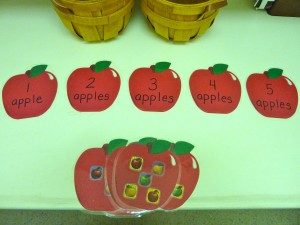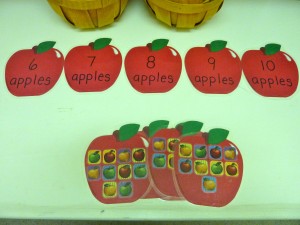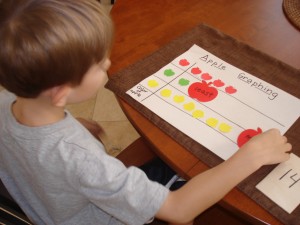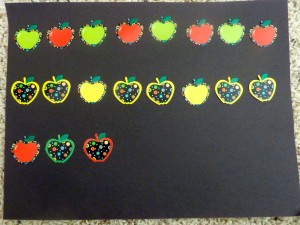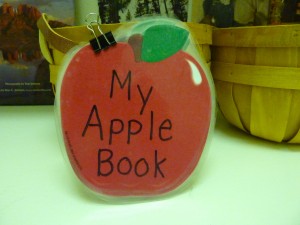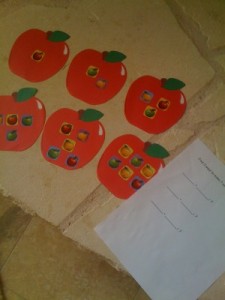Including short books or pages of books is a great station activity in any My Obstacle Course. When setting this up as My Obstacle Course station, I set out two books and have Andrew choose the book he’d like to read. Giving him the power to choose the book has worked so much more than just telling him what we are going to read.
Where To Get Thematic Books
I have accumulated a lot of my thematic books through the Scholastic Book Clubs and the public library or local bookstores are also a great place to get books to go along with whatever you are doing. The Scholastic Book Club is run through a school or classroom teacher. The school or classroom gets points to earn books for their library and the books tend to be at a discount from bookstores. If you want to be able to see the books you are purchasing by shopping at a bookstore, I know that at our local Barnes and Noble they usually have a whole table set up in the Children’s section entry with books to go with the season in a variety of reading levels and types (fiction/non-fiction).
Using books or stories as a station activity helps to build reading skills such as:
- Comprehension – this is a great opportunity to point out characters (if fiction), setting (when and where a story is taking place), important information, any problems (a great time to point out facial expressions or body postures illustrated with what is happening), predicting what will or what could happen next and pointing out the conflict resolution (if there was one) or tie back to the information learned from the book.
- Fluency – finding a good reading rate where the reader can be understood, no words are dropped or added and punctuation is followed. Andrew tends to run right through periods and will read so fast that he mumbles over words and phrases. Adding a strategy like pointing to words as they are read helps him read the words that are there and saying “stop” when he gets to a comma or period helps him remember what the punctuation means.
- Decoding – practicing sight words, spelling words or vocabulary words in isolation with a good deal of repetition is very helpful for struggling readers and having them read passages that are at their reading level is a great opportunity for them to practice their decoding in a purposeful way while also allowing you to see what words give them problems.
I have used these stations as:
- a “listening” station to help him build his “good listening” skills
- turn taking while reading – he reads one page or side and I read the other which helps to keep him engaged while giving him a break
- him reading pages or passages to build his fluency and intelligibility

Helpful Hints For Beginning Reading Skills:
- Point to the words as they are being read.
- Use a bookmark, ruler, piece of construction paper, reading guide (cool tool!) to help stay focused on the line of text being read.
- Have a pad of post-it notes handy to write down things learned, new words, words that were challenging and words to define.
Happy reading!
Engage, Encourage and Empower!






